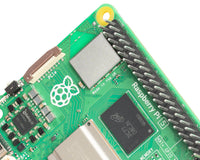Raspberry Pi Roundup - 16th October 2015
Pollution
Victoria Button has just seen the completion of the installation of her art project at a shopping centre in Chelmsford. The project, which is at the High Chelmer shopping centre, seeks to highlight the issue of air pollution in our environment and encourage social change. It reads pollution levels from various locations via a council API and then uses that data to determine lighting effects at the installation location. The 12 Raspberry Pi-controlled DMX lights project through four ‘leaves’ made out of squashed plastic bottles and changes throughout the day. The installation is up until the end of October.
You can find out much more by viewing the video of Victoria’s talk at the last Cambridge Raspberry Jam:
Netflix

So you want to watch Netflix on the television, dim your lights and order pizza at the same time? At the push of a button? Well, now you can with this nifty project that’s been put up on the Netflix Make It website. They used a LIPO-powered Particle Core microcontroller (which has built-in wi-fi) to accept the button input and then transmit it to a Raspberry Pi which controls the relevant appliances and follow-on actions. Take a look at the how-to on their website.
OS

Q4OS has announced that their operating system is now available for the Raspberry Pi. It’s not quite complete yet, and some features aren’t available, but it looks good and could prove a valuable alternative. Download the beta image from their website.
Zero

Ben Nuttall has been working hard to create a library which will provide a simpler interface to the GPIO pins. The library is called GPIO Zero. At the moment, on the RPi.GPIO library, there are a couple of commands to set things like the pin numbering system that kids are often told to just “enter and forget about”. This library obfuscates these commands to simplify matters. An example is shown below:
from gpiozero import LED
red = LED(2)
red.on()
Ben has built in several add-on boards so far and aims to make it the easiest way to program the GPIO in Python on the Pi. It’s actually a wrapper for the good old RPi.GPIO library, so existing code will still work the same way. You can read documentation and more information on PythonHosted.org as well as instructions on how to install it. Please bear in mind this is a beta so your mileage may vary!





